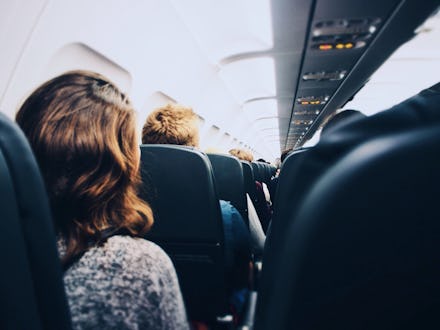6 things to know if you plan to fly anywhere during the coronavirus outbreak

The newest coronavirus continues to spread around the world — cases of the disease, COVID-19, have been observed in at least 67 countries as of 3:23 p.m. EST on March 2, the New York Times reports — flying can feel riskier than usual. On top of that, the unpredictability of its spread can make planning for travel even more of a headache. Here are six things to keep in mind if you need to fly anywhere during the coronavirus outbreak.
1. For now, avoid travel to China, South Korea, Italy, and Iran
On February 28, the Centers for Disease Control and Prevention added Italy and Iran to its list of Warning Level 3 countries, where people should avoid nonessential travel, which also includes China and South Korea, NPR reports. Foreign nationals who’ve visited China within the last 14 days are banned from entering the US, per CNN, and the administration recently announced the same would apply to foreign nationals who’ve visited Iran within the last 14 days. The administration also advises against traveling to parts of Italy and South Korea that have been particularly affected by the virus.
2. Avoid layovers in high-risk countries
The CDC also recommends avoiding layovers in Warning Level 3 countries, i.e., China, South Korea, Italy and Iran. If you have no choice but to layover in these countries, don’t leave the airport, and note that you may need to undergo screening and monitoring when you fly into the US.
3. Prepare for more screenings
The US is already conducting screenings for travelers flying in from China, checking for temperature and symptoms, per CNN. Any US citizen or resident who’s visited China within the past 14 days needs to undergo screening. The administration is in the process of setting up exit screening from Italy and other European countries as needed, as well as South Korea — so get to the airport early if you’re flying from these places to the US.
4. Domestic travel is safe, for now
If you have a bunch of domestic flights lined up, you probably don’t need to worry at the moment. Aaron M. Milstone, a professor of pediatrics at the Johns Hopkins University School of Medicine, told the New York Times that folks should feel “very comfortable” traveling within the US — but he also notes that the situation in the US could rapidly shift.
5. Be ready to change plans last-minute
The spread of COVID-19 can change at any time — meaning your travel plans can, too. The New York Times recommends staying up-to-date by routinely checking the CDC’s website for travel alerts. The World Health Organization posts daily updates, too.
Read the fine print on your ticket to ensure you’re cool with the cancellation policy, Vox suggests. You may even want to pay the premium for flexible fare. Most travel insurance won’t cover COVID-19-related losses, but you may have the opportunity to buy “cancel for any reason” coverage as an upgrade to your insurance plan.
6. Take steps to avoid infection
Wash your hands often, and avoid touching your face, the New York Times advises. Carry hand sanitizer or alcohol wipes in case you can’t get to a sink with soap. Using wipes on bathroom handles and other parts of the aircraft that the crew doesn’t sanitize on the reg probably won’t hurt. But skip the face mask, unless you’re sick; while it might prevent you from infecting others, it won’t protect you from COVID-19.